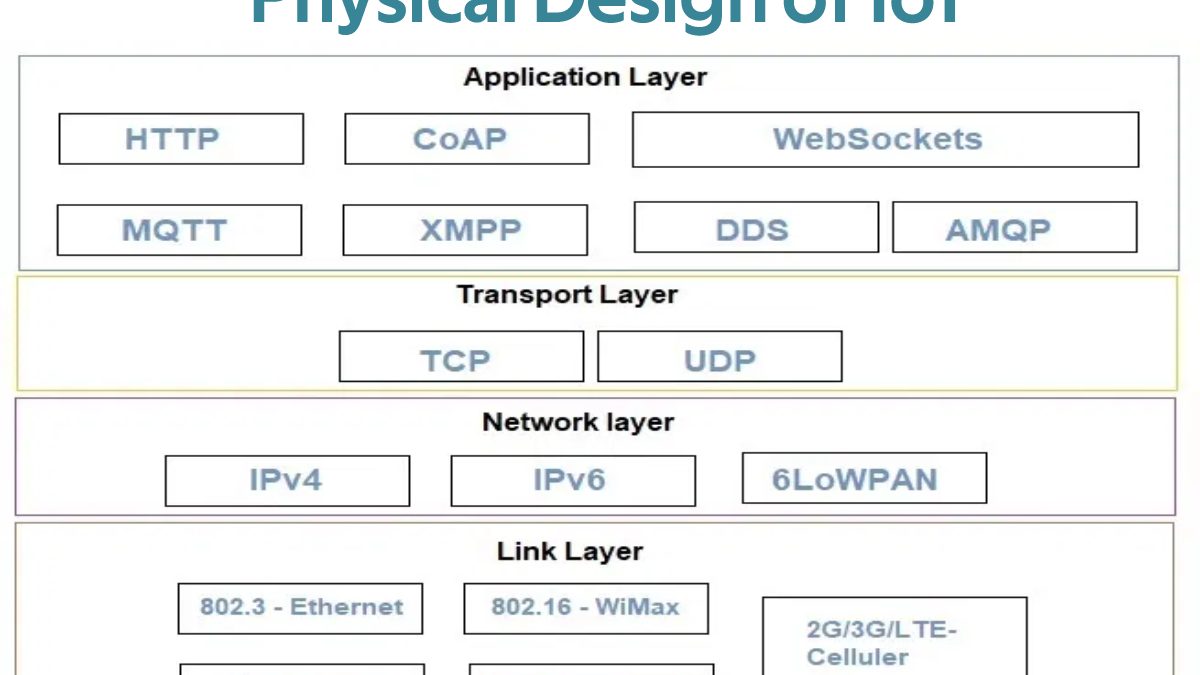Physical IoT Design
Table of Contents
About IoT
The Internet of Things (IoT) is a network of physical objects that are embedded with sensors, software, and other technologies to connect and exchange data with other devices and systems over the internet. These devices range from ordinary household objects to sophisticated industrial tools.
IoT devices collect data about their environment and use it to perform various tasks, such as automating tasks, monitoring systems, and providing insights. For example, a smart thermostat can collect data about the temperature in your home and adjust it automatically to save energy. A smart doorbell can detect when someone is at your door and send you a notification. And a smart irrigation system can collect data about the weather and moisture level in the soil to automatically water your lawn and garden.
The Physical Design of IoT
Things are the central part of the Physical design of IoT application.
Things refer to IoT devices with unique identities and can perform remote sensing, actuation, and monitoring functions.
These devices, in one way or another, generate data which, when processed by data analysis systems, generate useful information to guide additional actions locally or remotely.
IoT devices can be of different types: sensor devices, smart watches, intelligent electronics, wearable sensors, automobiles, and industrial machines.
For example, temperature data generated by a temperature sensor in the house or elsewhere can help processing, determine the temperature and take action based on users.
The iot ppt shows a generic block diagram of an IoT device. It can consist of several interfaces for connections to other devices. Then, the IoT device has an I / O interface for sensors and Internet, storage, and audio / video connectivity.
The IoT device collects data from embedded or connected sensors, and the detected data is transmitting to another device or a cloud-based server.
Today, many cloud servers are available specifically for the IoT system. This platform is known as the IoT platform.
These clouds are specially designing for IoT purposes. So, here we can quickly analyze and process data.
How does it work? For example, if the relay switch connected to an IoT device can turn a device on and off using commands sent to the IoT device over the Internet.
IoT Protocols
The IoT protocols help to establish communication between the IoT device (node device) and the cloud-based server over the Internet.
It helps send commands to the IoT device and receive data from an IoT device over the Internet.
With this, you can understand which protocols we can use.
Link-layer
The link-layer protocols determine how the data is physically sending over the physical layer or network medium (coaxial cable or other or radio waves).
This layer determines how packets are encoded and signaled by the hardware device over the medium to which the host is connected (e.g., coaxial cable).
Here we explain some link-layer protocols:
802.3 – Ethernet: Ethernet is a series of technologies and protocols that are mainly used in the LAN.
Also, it was first standardized in the 1980s by the IEEE 802.3 standard.
IEEE 802.3 defines the physical layer and the Media Access Control (MAC) sub-layer of the data link layer for wired Ethernet networks.
Ethernet is divided into two categories
- Classic Ethernet
- Switched Ethernet
802.11 – WiFi: IEEE 802.11 is part of the IEEE 802 set of LAN protocols and specifies the location of Media Access Control (MAC) and Physical Layer (PHY) protocols.
It allows local area network WLAN computer communication wireless (WLAN) on several Frequencies, including, but not limiting to, the 2.4 GHz, 5 GHz and 60 GHz frequency bands.
802.16 – Wi-Max: The standard for WiMAX technology is a standard for Wireless Metropolitan Area Networks (WMAN) they develop by the IEEE 802 Working Group 16, specializing in wireless broadband point-to-point access.
802.15.4 -LR-WPAN: A collection of standards for the low-speed wireless personal area network.
The IEEE 802.15.4 standard defines the MAC and PHY layers used by network specifications such as the Zigbee®, 6LoWPAN, Thread, WiSUN, and MiWi ™ protocols.
Then, standards provide low-cost, low-speed communication for current-limited devices.
2G / 3G / 4G cellular: These are different types of telecommunications generations.
Also, IoT devices are based on these standards and can communicate via cellular networks.
Network Layer
Responsible for sending IP datagrams from the source network to the destination network.
Then, network layer handles host addressing and packet routing. We use IPv4 and IPv6 for host identification.
Also, IPv4 and IPv6 are hierarchical ips addressing schemes.
IPv4
An Internet Protocol (IP) address is a numerical label assigning to any device connected to a computer network that uses the Internet Protocol to communicate.
An IP address has two main functions: host or network interface identification and site addressing.
Internet Protocol version 4 (IPv4) defines an IP address as a 32-bit number. However, due to the growth of the Internet and the depletion of available IPv4 addresses.
In 1998 a new version of IP (IPv6) standardizes that uses 128 bits for the IP address.
The adoption of IPv6 has been underway since the mid-2000s.

